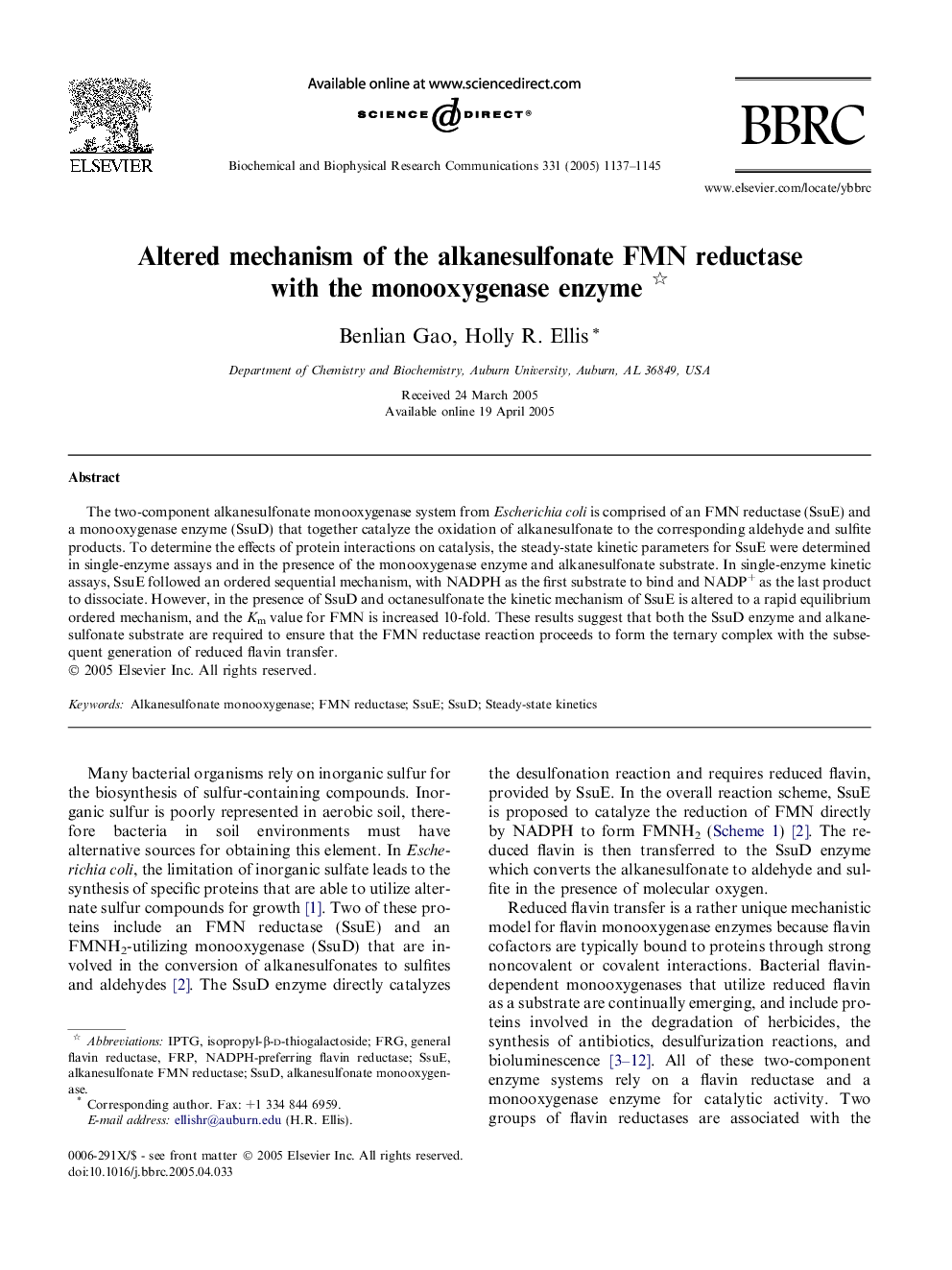| Article ID | Journal | Published Year | Pages | File Type |
|---|---|---|---|---|
| 10770403 | Biochemical and Biophysical Research Communications | 2005 | 9 Pages |
Abstract
The two-component alkanesulfonate monooxygenase system from Escherichia coli is comprised of an FMN reductase (SsuE) and a monooxygenase enzyme (SsuD) that together catalyze the oxidation of alkanesulfonate to the corresponding aldehyde and sulfite products. To determine the effects of protein interactions on catalysis, the steady-state kinetic parameters for SsuE were determined in single-enzyme assays and in the presence of the monooxygenase enzyme and alkanesulfonate substrate. In single-enzyme kinetic assays, SsuE followed an ordered sequential mechanism, with NADPH as the first substrate to bind and NADP+ as the last product to dissociate. However, in the presence of SsuD and octanesulfonate the kinetic mechanism of SsuE is altered to a rapid equilibrium ordered mechanism, and the Km value for FMN is increased 10-fold. These results suggest that both the SsuD enzyme and alkanesulfonate substrate are required to ensure that the FMN reductase reaction proceeds to form the ternary complex with the subsequent generation of reduced flavin transfer.
Keywords
Related Topics
Life Sciences
Biochemistry, Genetics and Molecular Biology
Biochemistry
Authors
Benlian Gao, Holly R. Ellis,
